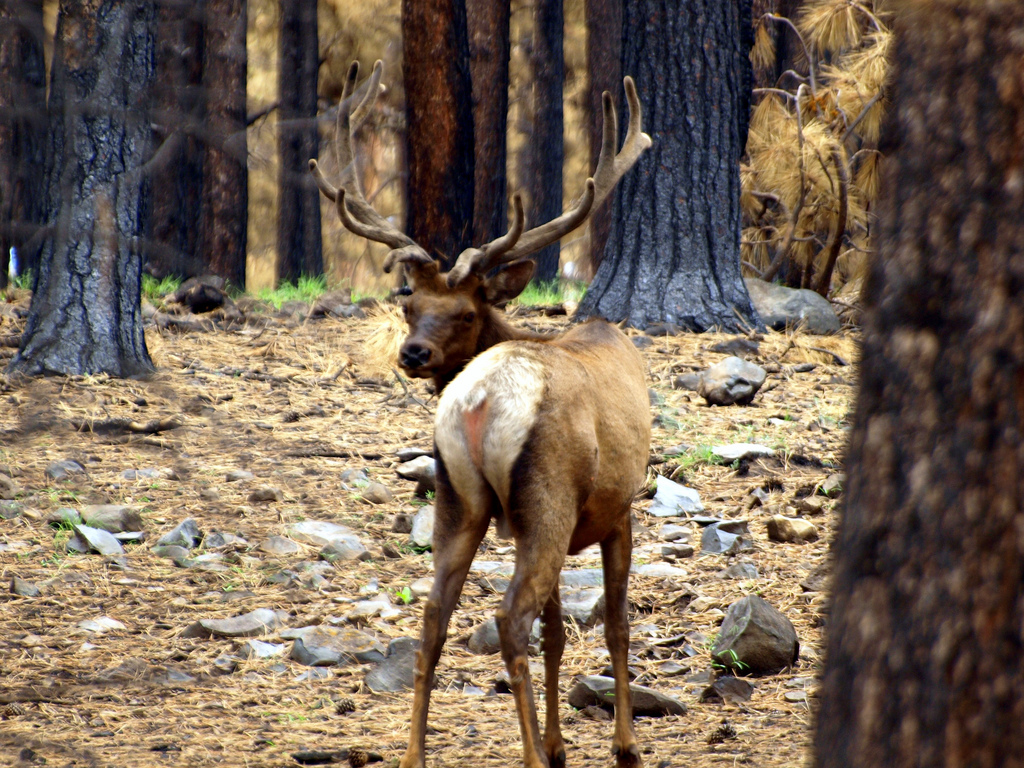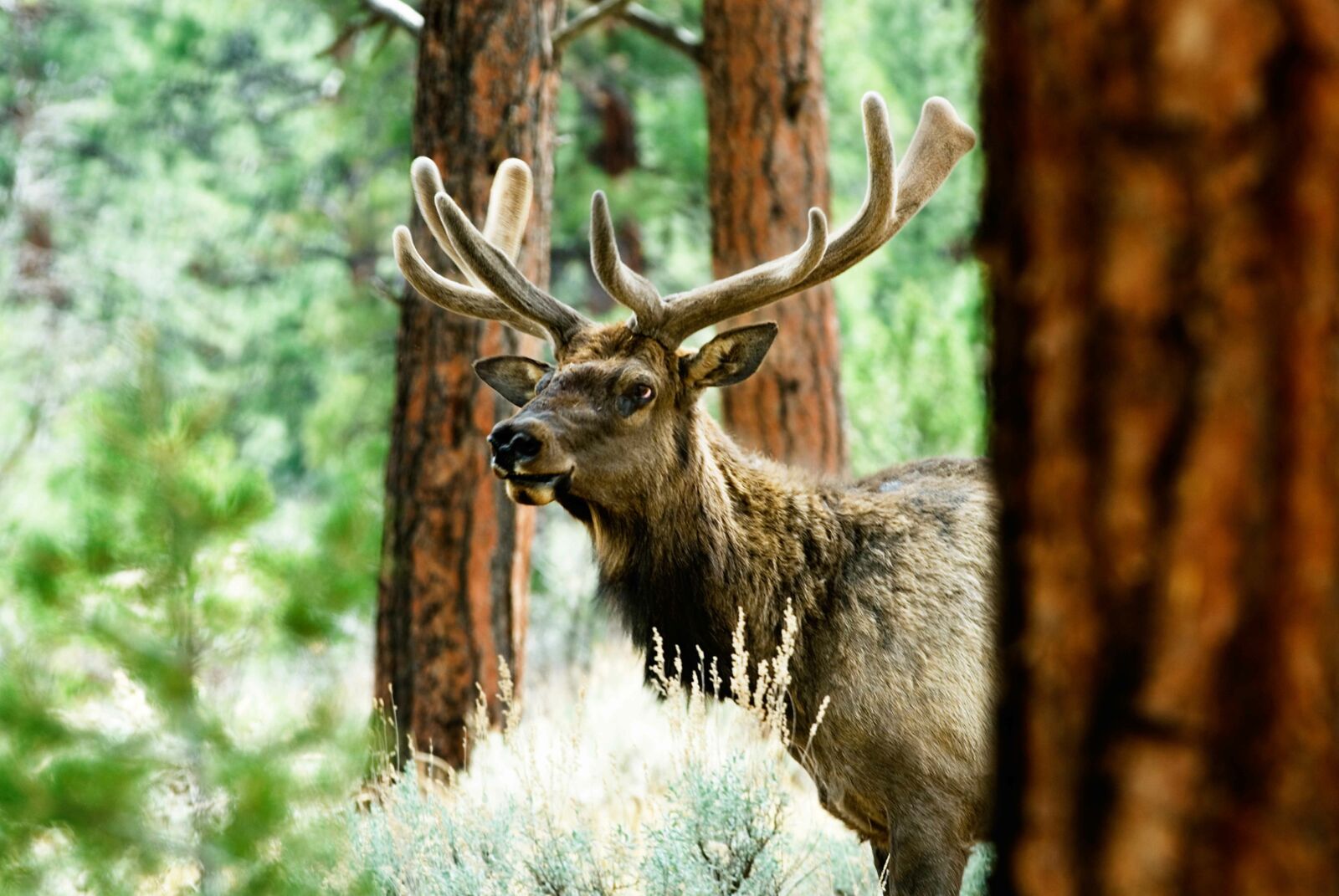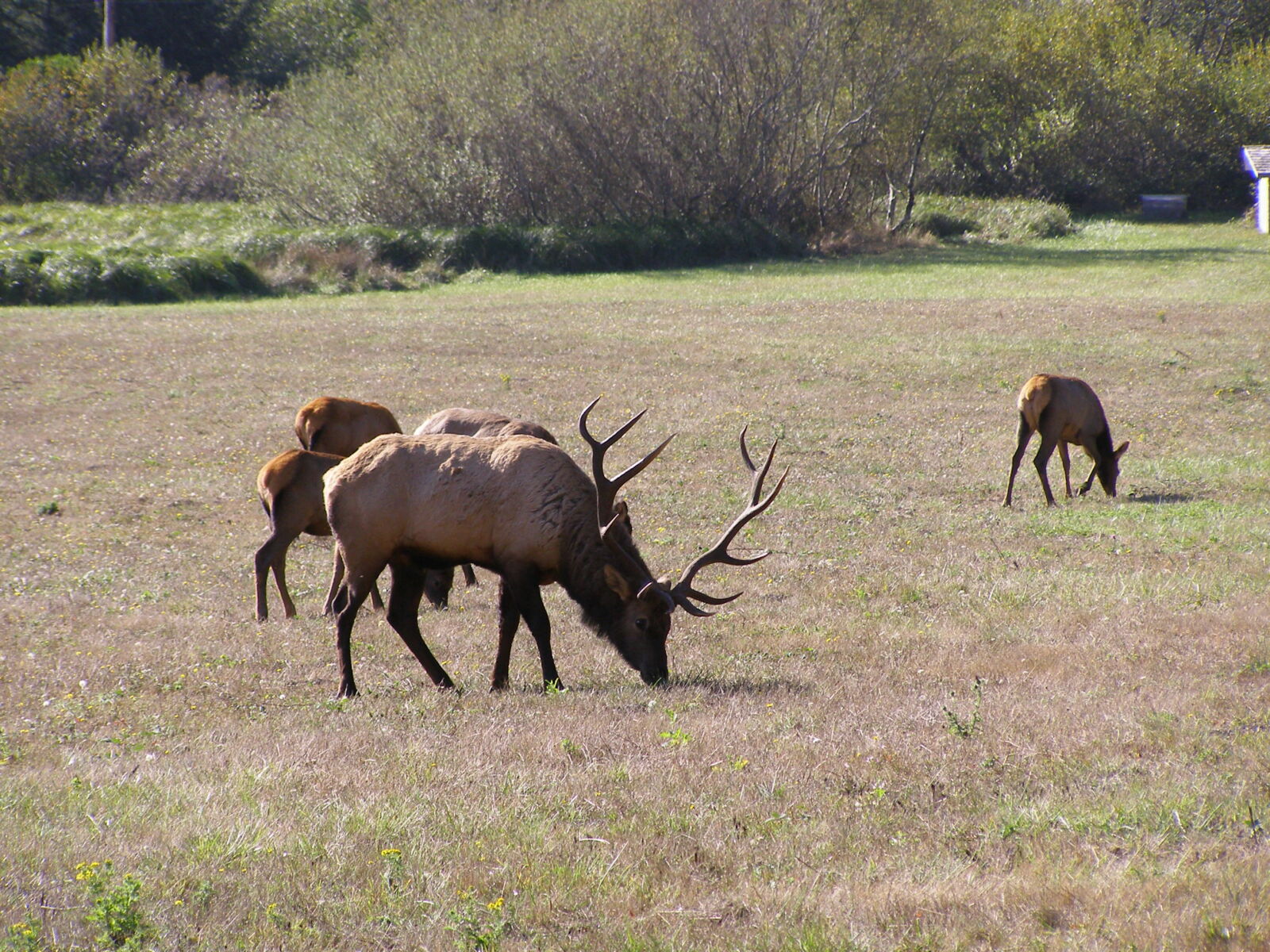Know who you’re talking to.
- Bull – male elk
- Cow – female elk
- Calf – baby elk
Elk used to have tusks.
Two of elk’s canine teeth are commonly known as ivory. Elk’s ivories are made of the same material and have the some chemical composition as tusks on walruses, wild boars and elephants.

Calves get the hang of things pretty quickly.
Calves can stand just 20 minutes after they’ve been born.
Antlers can be quite heavy.
A mature bull’s antlers, which are solid bone, can weigh up to 40 pounds.

But they start over with antlers each year.
Despite their size and weight, bulls shed their antlers every year and grow a new set next spring.
Maybe you haven’t seen an elk, but perhaps you’ve heard one.
Bull elk bugle, to both attract females and display dominance over other males.
They’re creatures of the night.
Elk move and feed at night and rest during the day.

You think you see a bunch of elk? No, you see a gang of elk.
Their group name is gang. How cool is that?
National Forests are important for Elk.
National Forests provide 80 percent of the habitat for not only elk, but mountain goat and bighorn sheep as well.

Elk aren’t just in the West.
Yes, elk inhabit much of the west. But did you know you could also find elk in Wisconsin, Michigan, Minnesota, Missouri, Pennsylvania, Arkansas, Kentucky, Tennessee, Virginia and North Carolina?
Learn more about elk from the Rocky Mountain Elk Foundation, Washington Department of Fish & Wildlife, National Geographic and the National Park Service.

